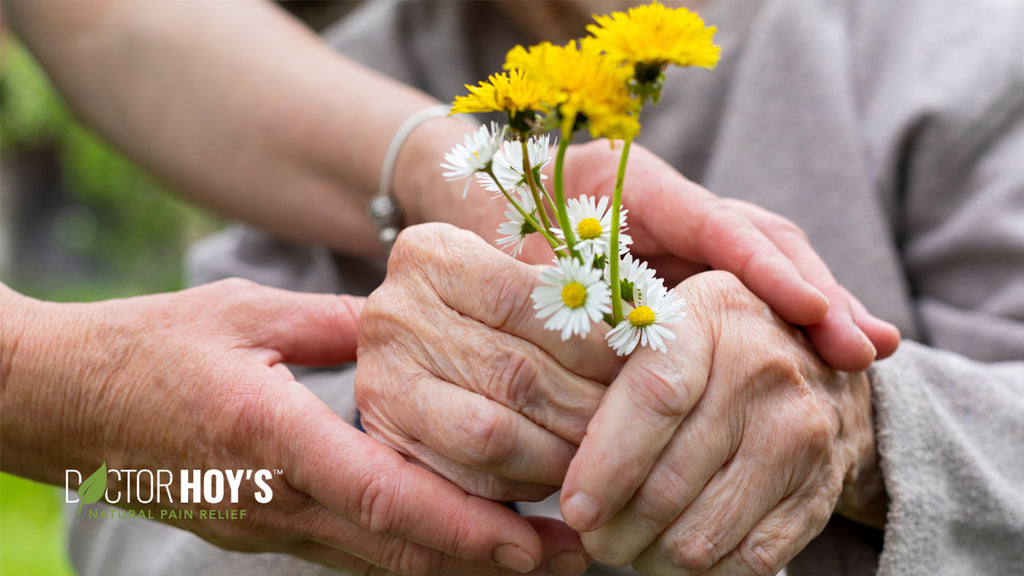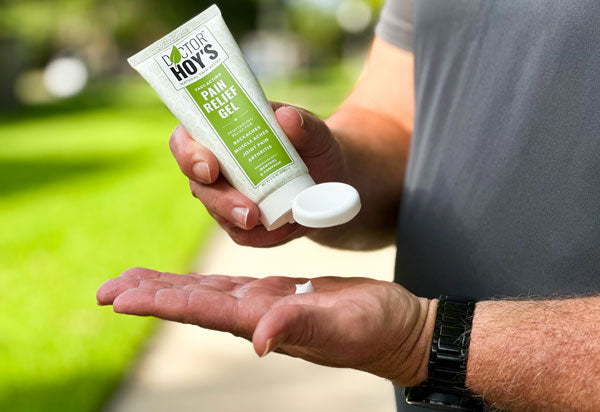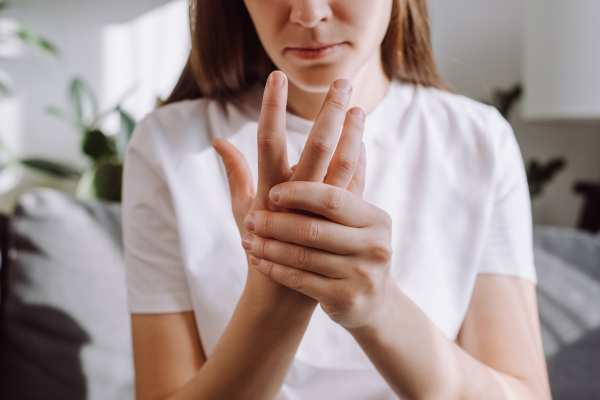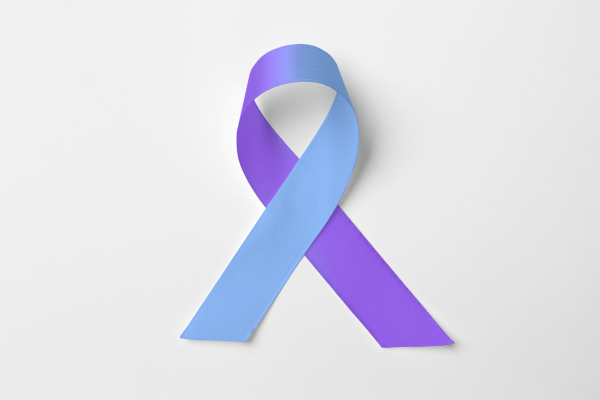Share

Understanding Arthritis & How to Manage It
About 58.5 million adults in the United States have arthritis, a painful condition affecting the joints and surrounding tissues. Arthritis often limits the activities a person can do and impacts their overall quality of life, making it essential to find a pain relief plan that works.
May is National Arthritis Awareness Month, designated to help increase awareness and encourage healthy ways to manage the disorder such as using natural pain relief methods like Doctor Hoy’s® Pain Relief Gel, an FDA-approved topical gel for arthritis pain relief.
Continue reading to learn more about the different types of arthritis, who they affect, and the five recommended steps for managing the condition.

What is arthritis?
Arthritis is a disorder characterized by the inflammation of one or more joints and surrounding and/or connective tissues. There are over 100 types of arthritis with varying causes and treatments. Below are the most common types of arthritis.
- Osteoarthritis is the most common type of arthritis. Also called degenerative joint disease, it happens through wear and tear caused by age, injury, or excess weight. The cartilage around the joint breaks down and the bones underneath rub together, resulting in pain, swelling, and loss of motion.
- Rheumatoid Arthritis, or RA, is an autoimmune condition. The immune system attacks healthy cells in the lining of the joints by mistake, causing pain and swelling. This can also affect the organs and eventually destroy cartilage and bone.
Other forms of arthritis you may have heard about are juvenile arthritis, which affects children; psoriatic arthritis, a variation of skin and joint inflammation; and gout, or inflammatory arthritis in the feet. Some types of arthritis may also be caused by infection.
How common is arthritis?
According to the CDC, about 1 in 4 adults in the U.S. are diagnosed with arthritis. Almost 26 million have trouble doing everyday activities because of their symptoms, making arthritis the leading cause of disability. Every 1 in 3 adults who have arthritis also:
- Are not physically active
- Report having fair to poor health
- Experience severe joint pain
Weather and resources make some areas of the U.S. the best places to live with arthritis. The CDC discovered arthritis is more common in rural areas than urban areas, which may be due to a lack of access to resources. Arthritis Awareness Month is important for promoting awareness and increasing access to state funded programs.
Living with Arthritis
Arthritis puts limits on our everyday lives. Depending on the kind you have, you might have a loss of motion in your joints and, when you move them, your arthritis pain might feel tender, stiff, achy, and uncomfortable.
Symptoms like joint pain, swelling, stiffness, and fatigue make it hard to enjoy and complete daily tasks. People with arthritis can often struggle with depression, insomnia, and problems in their social lives and work.

The Importance of Diagnosis
If you have joint pain, swelling, or stiffness and have not seen a doctor, it is important you make an appointment with your physician as soon as possible. Most joint damage from arthritis happens within the first two years of the disorder.
To diagnose arthritis, doctors ask about medical and family history. They conduct a physical exam that will test things like joint reflexes as well as take images of your joints. Blood tests and other screenings help rule out other medical conditions.
Five Steps to Managing Arthritis
There is no cure for arthritis, but early treatment and management can make it easier to live with arthritis and prevent disability. Your doctor will set up a treatment and pain management plan to improve joint function and relieve symptoms.
Five steps to managing arthritis are:
1. Talk to Your Doctor. Talk to your doctor throughout your treatment about how you are feeling. You can also discuss alternative medications like an arthritis pain relief cream that helps sooth joint inflammation.2. Try Natural Pain Relief Methods. Natural pain relief for arthritis like hot and cold therapy or topical creams offer relief with fewer side effects. Doctor Hoy’s Pain Relief Gel is a topical using natural ingredients that penetrate deep for safe, effective pain relief for arthritis.
3. Be Active. Staying active with arthritis friendly, low impact exercises like yoga, walking, swimming, and bicycling can reduce pain and improve joint function. Even gentle hiking with arthritis can exercise your joints and boost your mood.
4. Manage Your Weight. Being overweight puts excess stress on your joints. Losing weight and maintaining a healthy weight minimizes the pressure on your joints including your hips, knees, and ankles.
5. Learn About Resources. Staying informed will help you find resources that can make arthritis easier to manage. Look into state-funded programs for care and exercise, support groups, and other resources like the Arthritis Foundation.

Other Information About Arthritis Awareness
Represented by a blue and purple ribbon, National Arthritis Awareness Month is the perfect time to promote awareness, encourage healthy lifestyle habits, and raise funds for research. People may have an easier time coping with their chronic pain when they have the support and understanding of their friends, family, and community.
On the other hand, World Arthritis Day is October 12 while Rheumatic Disease Awareness Month, sometimes called Rheumatoid Arthritis Awareness Month, is every September. This month raises awareness for rheumatic diseases including rheumatoid arthritis, gout, lupus, and fibromyalgia.

Spread Arthritis Awareness with Doctor Hoy’s Natural Pain Relief
Living with arthritis does not have to be disabling when you have the support of others and access to different ways to manage your pain. For natural relief from aching joint pain that is long-lasting and works in minutes, try Doctor Hoy’s topical pain relief for arthritis.
References:
Arthritis Awareness Month. (2021, October 12). CDC.
Chaplain, S. (2022, May 2) May Is National Arthritis Awareness Month. AAPC.
Disability and Arthritis. (n.d.). Illinois Department of Public Health.
Theis, K. A. (2021). Prevalence of Arthritis and Arthritis-Attributable Activity Limitation — United States, 2016–2018. MMWR. Morbidity and Mortality Weekly Report, 70(40). https://doi.org/10.15585/mmwr.mm7040a2
Veazey, K. (2023, April 25) How to promote rheumatoid arthritis awareness. Medical News Today.
